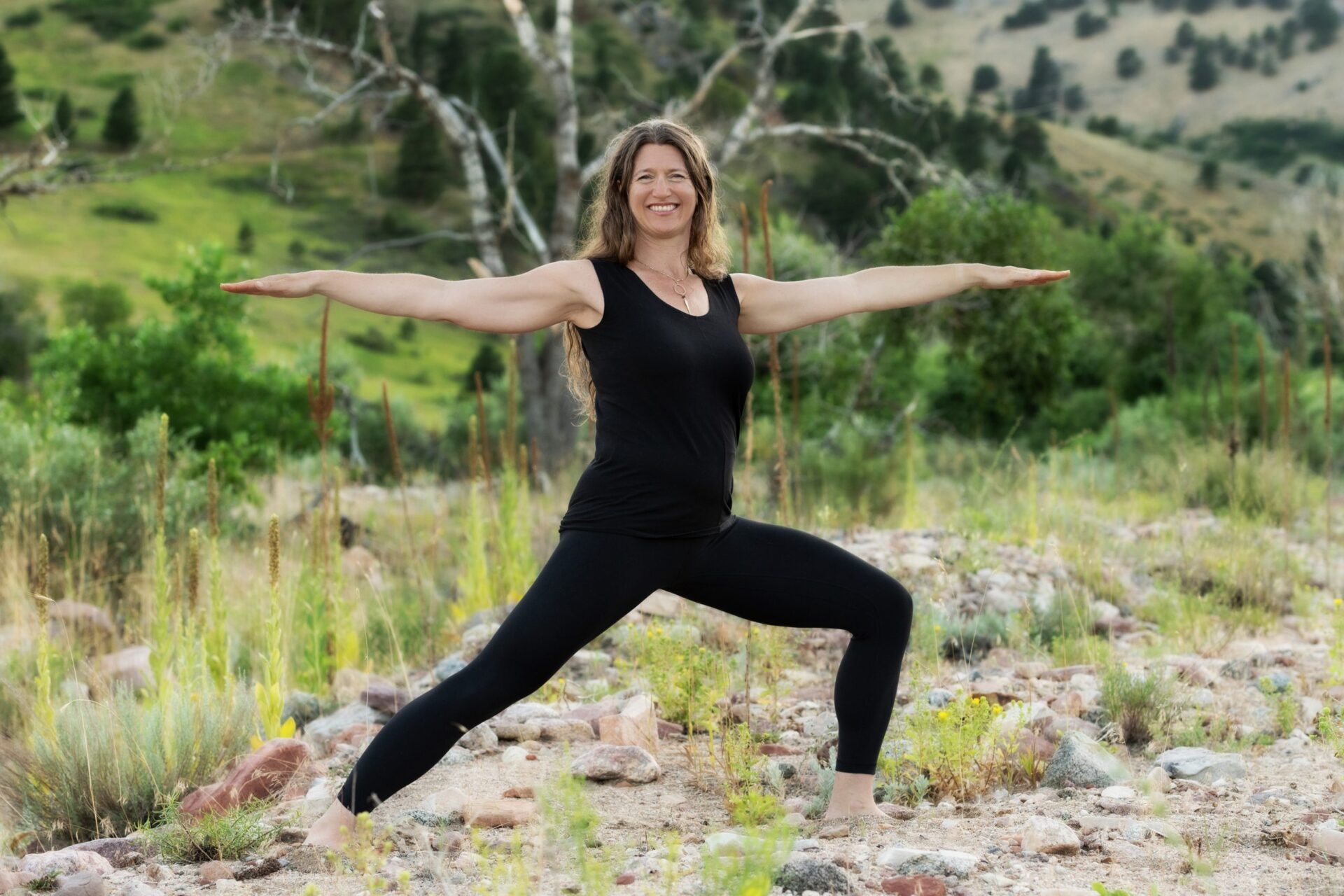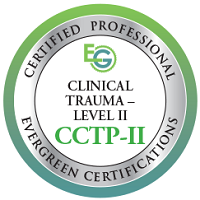A Sacred Pilgrimage

Healing from trauma invites you to befriend your body; and this needs to occur at a pace that honors your unique needs. Initially, this involves developing the resources to handle challenging emotions, disturbing symptoms, and distressing memories.
The goal is help you find your ground through a felt sense of stability and safety. Within applied polyvagal theory in yoga, you learn to trust the predictability of the support that your yoga mat provides.
Therapeutic yoga for trauma recovery is best supported when you have a calm, peaceful, and safe environment for your practice. You might find this within a class; however, if you are choosing to begin a home-based practice, I encourage you to take some time to create a space that feels nourishing to your body and mind.
I invite you to think of your yoga space as a sacred ground…and each time you return is a pilgrimage to your body, mind, heart, and soul.
Dr. Arielle Schwartz
Embodiment Strategies for Trauma Recovery
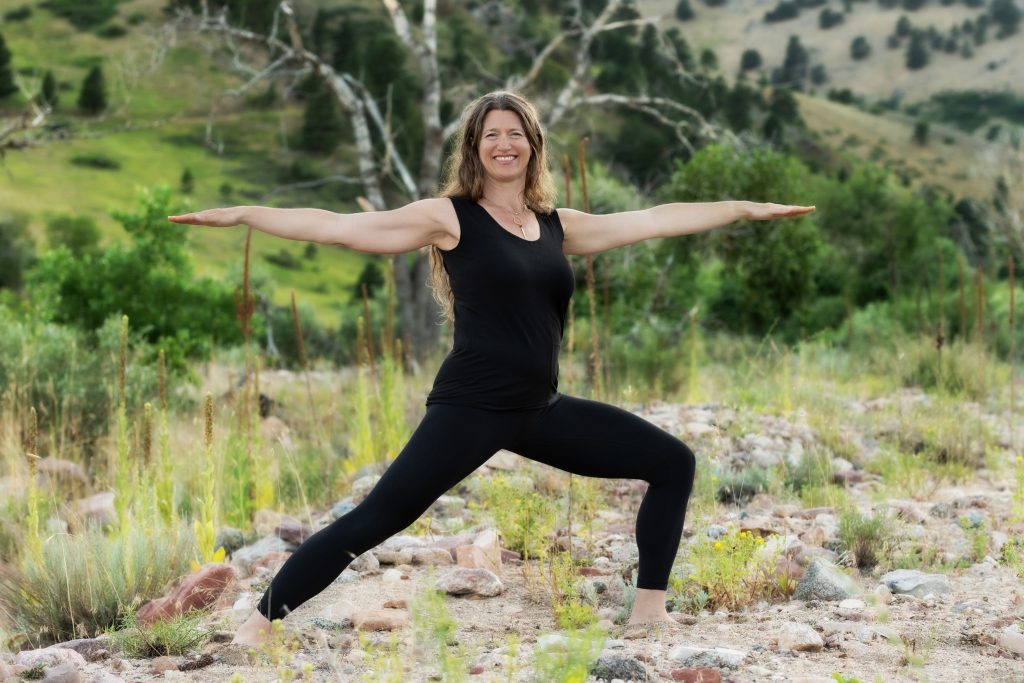
One of the defining features of traumatic events is the loss of choice over what happened to you. They can leave you feeling trapped, helpless, or powerless. Therefore, recovery from trauma involves realizing that you do have choices available to you now (Emerson & West, 2015). A therapeutic approach to yoga involves recognizing that you have choice now. Throughout each practice, you can decide how to move and breathe. You can decide whether you want your eyes open or closed.
When we do not feel as though we have choices, we can begin to feel trapped our nervous system perceives a threat.
A sacred space, whether it is found in nature or created by humans, provides a sense of solace and respite from the unpredictable or chaotic aspects of life.
Ideally, your space feels safe enough for you to relax. This baseline of safety will then allow you to observe your body and mind for patterns of tension or changes in how you are breathing that are arise as you release trauma related emotions from your body. See if you can allow yourself the gift to feel held within your peaceful, calm space.
Applied Polyvagal Theory in Yoga | An Orienting Practice:
- Take a moment to arrive on your mat and look around your space. You can turn your head to look right and left and you might even turn your whole body to observe the space behind you. Notice any cues that serve as reminders that this is a safe and sacred healing space for your practice.
Neuroception and the Polyvagal Theory

Applied polyvagal theory in yoga guides you to become a compassionate witness to your body and mind. This provides a powerful foundation for self-knowledge. At times, your body might react to a stressful event even before you are aware of the trigger. Even without conscious awareness, your brain and body have released a cascade of stress chemicals such as cortisol and adrenaline. This is one reason why you cannot simply think your way out of the symptoms of trauma; rather, you must work with the body to maximize healing. Having a regular yoga practice can play an instrumental role in this process.
Dr. Stephen Porges coined the term neuroception to reflect the process by which the your vagus nerve is communicating internal and external cues about whether situations or people are safe, dangerous, or life threatening. Your nervous system will find these cues within the body, in our external environment, or in the body language, facial expressions, or voice tones or other people. For example, changes in heart rate or subtle shifts in muscle tone impact your sense of self but you might not be aware of these changes as they occur.
The vagus nerve plays a key role in neuroception because of the many extensions throughout your body. It is the tenth cranial nerve and can best be described as a bidirectional communication highway between your body and your brain. The term vagus is Latin for “wandering,” which is an apt descriptor for a nerve that extends from the brainstem into the stomach, intestines, heart, lungs, throat, and facial muscles. Approximately 85 to 90 percent of vagus nerve fibers are afferent which means that they bring sensory information from your body to your brain.
Read more about Vagus Nerve Yoga here
Applied Polyvagal Theory in Yoga | An Awareness Practice:
You can learn to pay attention to neuroceptive cues by consciously observing signs that your body is responding to a threat. For example, you furrow your brow, tighten you jaw, grip your hands, or clench your buttocks. You have an opportunity to engage in this practice awareness in any yoga practice whether you are moving in asana, resting in savasana, practicing pranayama, or seated in meditation.
- Begin to notice to whether it feels easy or difficult for you to sit still. Are you moving more or less than usual? Do you feel the urge to fidget? Do you feel restless or jittery? Do you feel lethargic or sluggish? Do you feel collapsed or slumped? Do you feel frozen or excessively still? Do you feel relaxed and at ease?
- Begin to notice how you are breathing. Do you notice a tendency to hold your breath? Are you breathing in a shallow manner? Does your breath feel quickened or do you notice a shortness of breath, like you cannot get enough oxygen? Are you breathing freely and easily?
- Do you notice any tension around your eyes? Do they narrowed or is your brow furrowed? Do you have tension in your forehead or around your temples?
- Bring awareness to your jaw and mouth. Do you notice that you purse your lips or clench your teeth together? Is your tongue pressed firmly against the roof of your mouth?
- Notice if you feel tension in your throat, neck or base of your skull. Perhaps roll your shoulders forward and back and notice any tightness or constriction around your shoulders, upper back, or chest.
- Bring awareness to your belly. Do you notice any tension around your diaphragm, stomach, or low back?
- If you feel comfortable, bring awareness to your pelvis and hips. Do you notice a tendency to clench the gluteal muscles in your buttocks or to grip in your pelvic floor.
- Notice your legs and feet and see if you tend to carry tension by gripping the muscles in your thighs. Perhaps you carry habitual tension in your calf muscles. Do you tend to grip your feet or curl your toes?
- When you feel complete, take the time to notice any observations about yourself during this awareness practice.
Breathing for your Vagus Nerve

The breath plays a key role in your health in part because the vagus nerve extends into the smooth muscle of the lungs and heart. The nerves connecting to the heart and lungs have both sympathetic and parasympathetic functions. The sympathetic nervous system is associated with quick, intense breaths into the upper lungs, a condition often referred to as over-breathing or hyperventilation. During times of stress, your nervous system initiates the release of cortisol via the hypothalamic-pituitary-adrenal axis (HPA-axis) to mobilize your self-protective defenses through an increase in heart rate and respiration. When this continues overtime, rapid upper chest breathing leads to over-breathing or hyperventilation which is associated with panic attacks and anxiety.
While changes in breathing happen automatically in response to stress, we also have the ability to alter our physiology through conscious, mindful changes in our breath rate. Long, slow exhalations engage the vagal break and the parasympathetic relaxation response slows down your heart rate.
The health of the autonomic nervous system is measured through vagal tone and vagal efficiency. Vagal tone is measured by changes in heart rate in relationship to the breath. The heart rate typically increases on each inhalation which reflects a subtle engagement of the sympathetic nervous system and decreases during each exhalation as the parasympathetic nervous system re-engages. The relationship between your breath and these changes in heart rate is referred to as heart rate variability (HRV). Having higher vagal tone means that you have greater variability between the number of heartbeats on the inhalation as compared to the number of heartbeats measured on the exhalation. Simply put, vagal tone is measured by your ability to move between stress and relaxation efficiently and easily. You can think of this as the physiological basis for resilience which allows you to flexibly respond to inevitable challenges of life.
Read more about Breathing for your Vagus Nerve Yoga here
Applied Polyvagal Theory in Yoga | A Breathing Practice:
This practice involves creating an even length of your inhalation and your exhalation with diaphragmatic or “belly” breathing. I encourage you to study the effect that a simple practice has on your body and mind.
- Find a comfortable place to sit where you feel supported and at ease. Begin by simply noticing your breath. Notice the length of your inhalations and exhalations. Notice the transitions between the inhales and exhales. Notice if you are feeling any physical, emotional, or mental distress or tension.
- I recommend bringing one or both hands over your navel and focusing each inhale into your lower lungs by expanding this area like a balloon and exhaling as your draw your navel back toward your spine.
- When you are ready, begin to create a measured length of your breath with a count of four on each inhale and a count of four on each exhale. You can easily tailor this breath to meet your needs by increasing or decreasing your count.
- When you feel complete, take the time to notice any observations about yourself during this breathing practice.
Posture and Vagal Tone
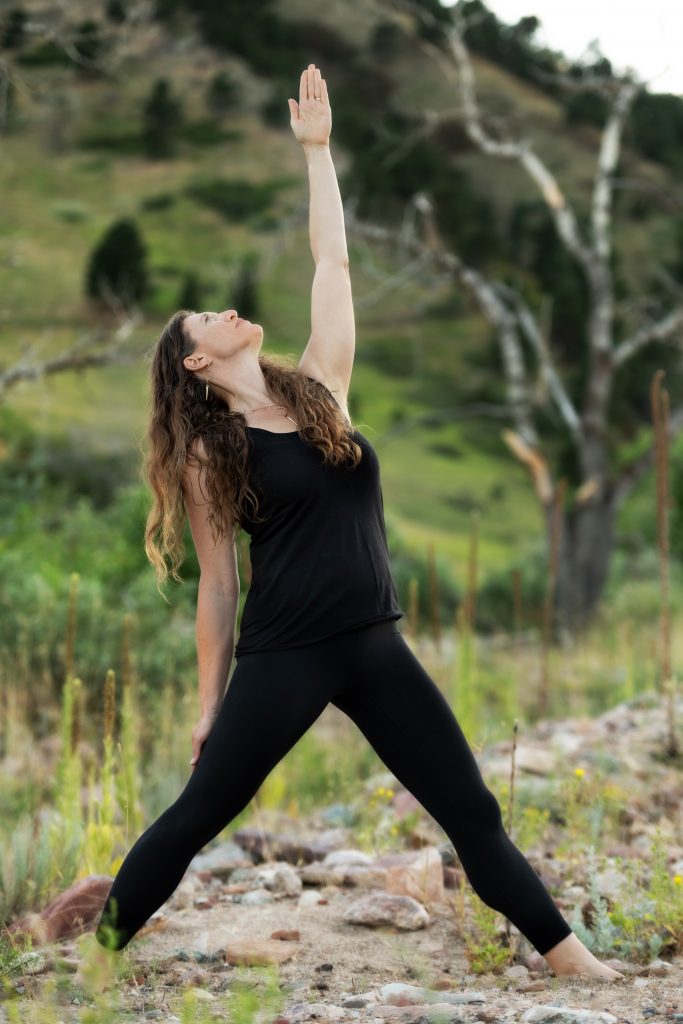
Postural shifts also influences your vagal tone through blood pressure receptors called baroreceptors which send signals to your brainstem. These signals will either increase or decrease your vagal tone in order to regulate your heart rate. For example, sitting or standing up quickly will temporarily decrease vagal tone which will increase your heart rate and a visceral feeling of activation. Ideally, this is followed by re-engagement of your ventral vagal complex which allows you to return to a calm and relaxed state.
Tolerating postural changes such as moving from laying down, to sitting, to standing, can provide a good measure for resilience of your nervous system. Yoga practices often involve moving through postural transitions in a repeated, rhythmic manner that allow you to alternately increase and decrease your heart rate. You might think of this as strengthening the resilience of your nervous system in addition to the physical endurance required in these actions.
Applied Polyvagal Theory in Yoga | A Movement Practice:
- I invite you to build the resiliency of your vagus nerve as you move between standing in mountain pose to a standing forward fold. Move slowly enough to notice the subtle ways that your nervous system accommodates these transitions.
- From standing, inhale as you bring your arms up overhead.
- Exhale as you fold forward over your legs. Keep your knees slightly bent to reduce tension in your lower back or legs.
- Slowly, inhale as you explore coming to a half-way lift by placing your fingertips on the floor, your shins, or on blocks in front of you.
- Exhale, as you return to the forward fold.
- Inhale, return to standing in mountains as you lower your hands by your sides. Take several breaths here and notice how you feel.
- If you would like, repeat the forward fold sequence as you mindfully stay connected to your body and breath.
- When you feel complete, take the time to rest in stillness either sitting or lying down and notice any observations about yourself during this simple movement practice.
Focusing Inward
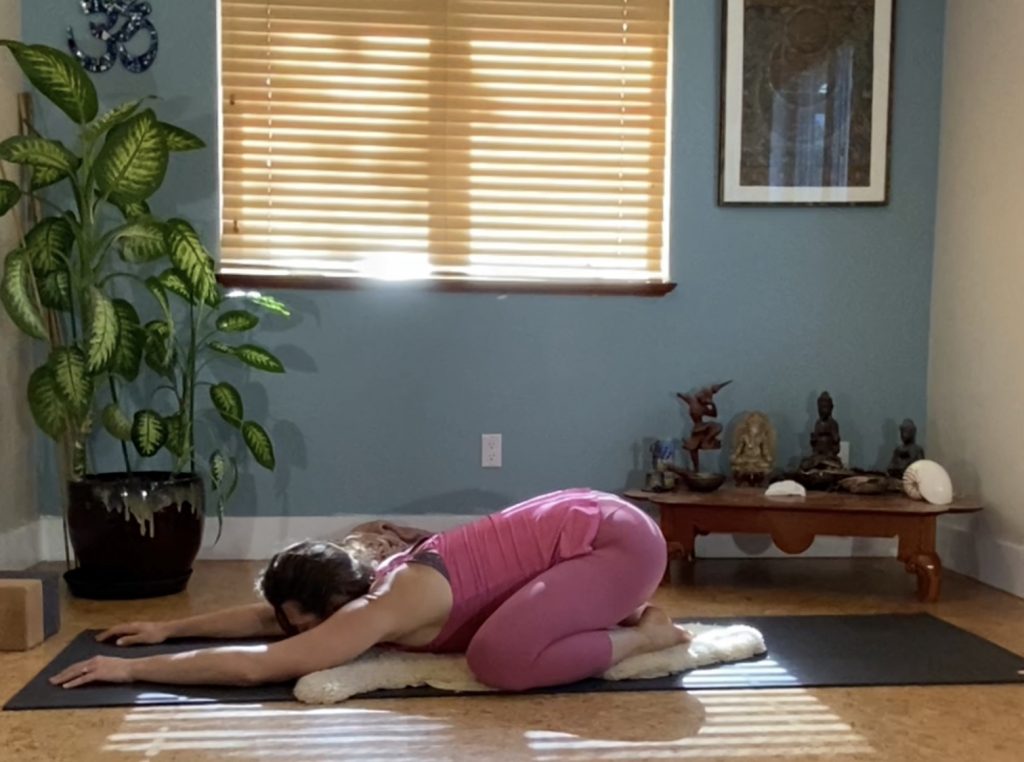
Focusing inward invites you to gently soften or close your eyes so that you can notice your internal sensations. For example, you can pause while reading this and bring your awareness to the sensations of your body as you make contact with your chair. Or you might notice the feeling of your belly rising and falling with your breath. From a yogic perspective, you can think of this process as directing your life force energy toward yourself. Ideally, this can be offered as a way to nourish yourself with self-awareness.
This next practice invites you to focus your attention inward while in a child’s pose. For some, the name “child’s pose” brings up discomfort because it evokes memories from a vulnerable time. If this is the case, you can choose to rename this pose giving it a new meaning for you. For example, you might call it “wisdom” or “resting” pose.
Applied Polyvagal Theory in Yoga | A Resting Practice
- Begin to settle your hips toward your heels. There is no single right way to create this shape. Take your time to adjust your shape until it feels supportive for you. You might place your knees close together which will allow your chest to rest on your thighs or, if you widen your knees, your chest might soften closer to the floor. You might prefer to have a folded blanket or bolster between your hips and your heels to reduce pressure behind your knees. You might choose to rest your forehead on the floor in front of you or on a soft pillow. You can also explore whether you prefer to have your arms outstretched in front of you alongside your head or resting back beside your torso.
- Child’s pose is a forward fold that naturally draws your attention inward. Your belly and vital organs are protected in this shape. How does your mind respond as you slow down? As you allow your forehead to make contact with the floor or on a blanket see if you can allow the muscles in your neck to relax. This inward turn, invites you to soften your vigilance and let go into a sense of support and safety. Take a few more deep breaths and whenever you feel ready to come out of this shape, place your hands underneath your shoulders and slowly press into your hands to lift your spine until you have returned to sitting up.
- When you feel complete, take the time to rest in stillness either sitting or lying down and notice any observations about yourself during this simple movement practice.
A Path to Freedom

Eventually, you will develop the inner strength to attend to your suffering with greater compassion. With applied polyvagal theory in yoga, you can build your capacity to turn toward your emotions, sensations, and memories associated with traumatic events. As you sense the weight of traumatic events held in your body, you can begin to deepen your experience by following how your body wants to breathe or move in response to what you are feeling.
As you release burdens and grieve the past you will also begin to cultivate a new felt sense of freedom and possibility.
Curious to Learn More about Applied Polyvagal Theory in Yoga?

In collaboration with the Polyvagal Institute, I created a 4-hour training which provides 2 hours of on-demand recorded lectures sharing the application of the polyvagal theory to the practice of yoga. These lectures are accompanied by a 1-hour guided physical yoga practice in which you are invited to move and breathe allowing you to experientially embody and integrate the course material. This course concludes with a 1-hour recorded discussion between Dr. Schwartz and Dr. Porges which explores topics such as:
- compassion based practices to facilitate greater resilience within the nervous system
- conscious breathing to work with imbalances in the autonomic nervous system
- how yoga asana and movement can assist in reducing physical and emotional pain
- the key role of co-regulation in facilitating an optimal healing relationship
Through the lens of polyvagal theory, you will learn all about how the vagus nerve is a bi-directional information highway between mind and body—more importantly, you will learn to fine-tune your health with breath, movement, and awareness practices that become the building blocks of a life-changing daily practice.
Learn more and Sign up for the Polyvagal Yoga course here!
Therapeutic Yoga for Trauma Recovery
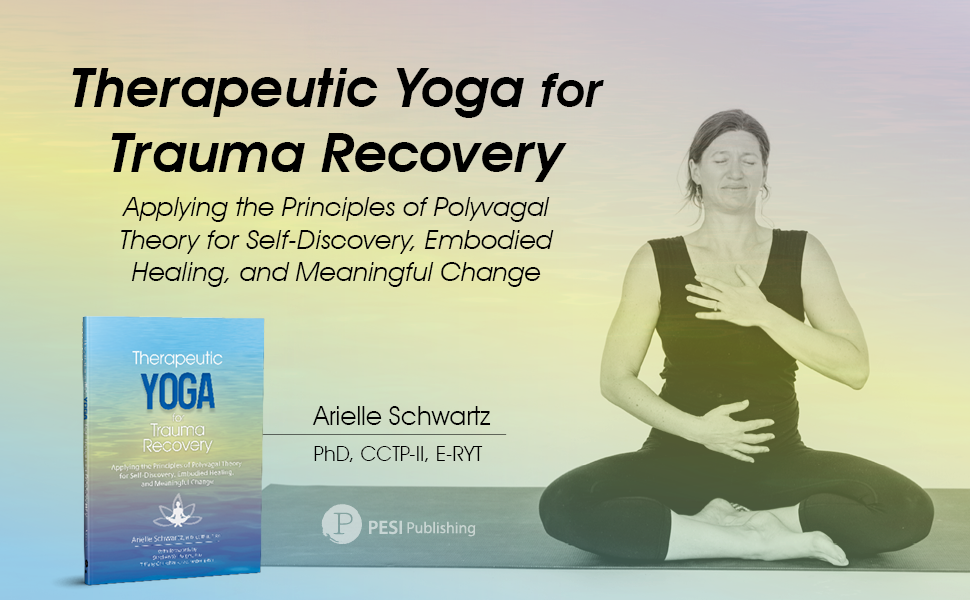
This post has excerpts from the book, Therapeutic Yoga for Trauma Recovery,
This book introduces you to the power of the yogic philosophy and offers a variety of accessible yoga poses and breathing practices that will allow you to:
- Nourish your nervous system
- Reconnect with your body
- Ground yourself in the present moment
- Release unresolved patterns of fight, flight, freeze, or faint
- Widen your ability to tolerate emotional discomfort
- Develop a felt sense of resilience
- Anchor yourself in self-love
- Reclaim connection with and trust in your body
- Create a personalized yoga practice for your own self-care
About Dr. Arielle Schwartz

Arielle Schwartz, PhD, is a psychologist, internationally sought-out teacher, yoga instructor, and leading voice in the healing of PTSD and complex trauma. She is the author of five books, including The Complex PTSD Workbook, EMDR Therapy and Somatic Psychology, and The Post Traumatic Growth Guidebook. Dr. Schwartz is an accomplished teacher who guides therapists in the application of EMDR, somatic psychology, parts work therapy, and mindfulness-based interventions for the treatment of trauma and complex PTSD. She has a depth of understanding, passion, kindness, compassion, joy, and a succinct way of speaking about very complex topics. She is the founder of the Center for Resilience Informed Therapy in Boulder, Colorado where she maintains a private practice providing psychotherapy, supervision, and consultation. Dr. Schwartz believes that that the journey of trauma recovery is an awakening of the spiritual heart.




